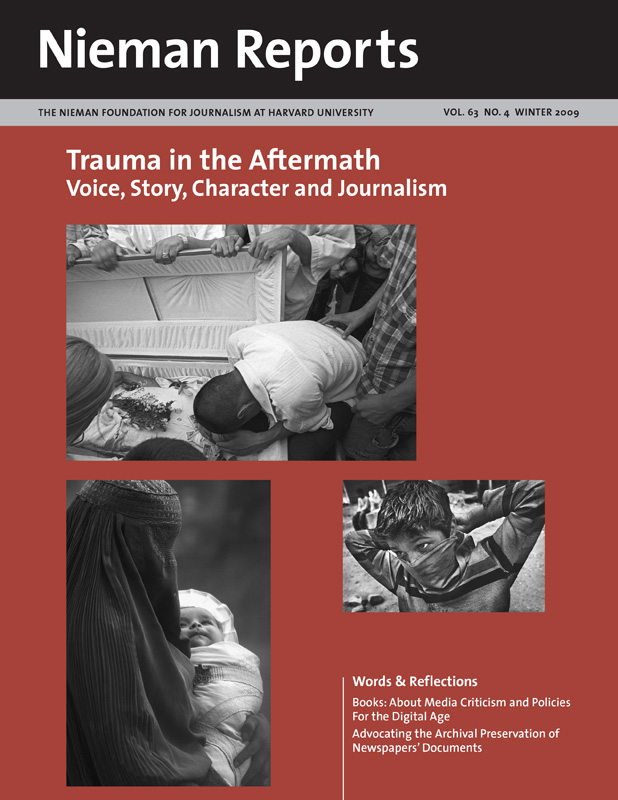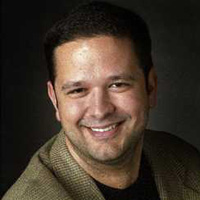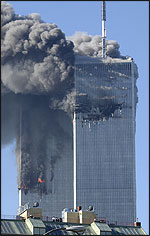Alicia Anstead previously wrote “Embedding a Reporter With a Shakespearian Production” in the Fall 2009 issue.Journalists at the “Aftermath” conference talked about the intersection of trauma and art. Leading the conversation were Chris Vognar, a movie critic at The Dallas Morning News and a 2009 Nieman Fellow, and Alicia Anstead, a 2008 Nieman Fellow who for two decades covered arts and culture for the Bangor Daily News and edits Inside Arts magazine. Glenda Carpio, an associate professor of African and African-American studies and English at Harvard University and author of “Laughing Fit to Kill: Black Humor in the Fictions of Slavery,” was the moderator. Edited excerpts of their remarks follow:
Vognar: I’m primarily interested in examining the safe distance that a critic can have from her obligation, when it comes to covering trauma and art. It’s the idea that we’re bearing witness to this bearing of witness, and we’re supposed to stand there and scratch our chins and write down our analytical thoughts, but at the same time we want to experience that art. We get into doing this hopefully because we feel very passionate about it.
“United 93,” a film about 9/11 that came out a few years ago, is an example of this. We are supposed to be able to just watch it, observe it, and analyze it. Yet, we are also human beings as well as critics so there’s that tricky balance of watching, observing and at the same time wanting to give yourself in full to art and to what you’re watching. I bring up “United 93” largely because I was able to see it at the New York premiere at the Tribeca Film Festival a few years ago. Journalists were writing about whether it was too soon for this movie to come out. “What will people think? Is it appropriate to be showing it at this time?” That’s an easy story for the journalist to cover. But when I went to the movie, I knew 9/11 victims’ families are there and they are sitting above me in the balcony.
The film ends, obviously, with a plane crash. It’s a very loud cataclysmic ending to the film and then there’s just pure silence and then it goes to black, which is a very powerful ending. I had seen the film already with a few critics in a screening room in Dallas which was a very antiseptic way to see any film. It was a much different experience seeing it with victims’ family members.
As soon as the screen went black and the silence descended, there wasn’t even any time to process my thoughts. The first thing I heard was this uncontrollable sobbing and wailing throughout the theater, and it was a very powerful experience. It was obviously a cathartic experience for these people. It was for me, but nowhere near on the same level. I was staying with a friend in New York and I remember going back to his house afterward and I was going to write my story the next day. I told him, “Every time I think about the sound of the voices of these people, it really does something to me. My response is to not think about it.”
Art can have that kind of impact. We’re not covering wars; we’re not, for the most part, covering crime or crime scenes. But at the same time, we’re often in these situations where we’re covering something that’s both larger than life and smaller at the same time; it’s not the real thing. Art has this very powerful emotion and redemptive force that we are bearing witness to and trying to convey analytically when our emotions tell us it is very hard to convey analytically.
Carpio: The big challenge is how not to make the story about you watching the movie. How do you maneuver your response to the darkness, the cries, and your job as a writer? How do you find some kind of balance between honoring you as a human being in the room but also as someone who has some distance so that the story doesn’t become this thing about you?
Anstead: Glenda, you have written about having the responsibility to not sentimentalize what you’re looking at because it is or can be so powerfully emotional that you’re talking about a chaos of responses. I think it’s very easy to stay in Act I of a response, yet as arts writers and reporters, it’s our obligation to move on to Act II [with the addition of deeper personal reflection and genuine storytelling elements]. As a critic, the big question you get asked, sometimes in the middle of a show, is “what does it mean?” I feel that that’s a question for all of us as journalists, not only in the domain of the arts. That’s the question we should all be grappling with and sometimes you can’t get to the meaning. Sometimes the meaning may be more elusive.
My dirty little secret about being a journalist and, in particular, writing about the arts is that I do have a lot of passion. The circle that we exist in as journalists—that safe little distance that we establish [for ourselves] outside of the circle—I actually feel that we are inside the circle and that’s where we have to cautiously guard our distance. We have to be inside of the circle to understand the conversation, to get down and dirty with the people who are making art, and still keep that distance by preserving our personal and professional space apart from them. That’s very important.
It’s as important in war correspondence as in arts reporting and covering global health and the economy that our humanity is what drives us. I’d like to see more of that. Not the first person, not your story, but stories that come from our shared sense of humanity.
Carpio: I am thinking about somebody like Toni Morrison who has been faulted for aestheticizing black pain, even in a text like “Beloved,” which has brought the question of American slavery to countless syllabi. What does it mean to make a horrible story beautiful too? What does it mean to make it strangely funny? To make it both funny, like Richard Pryor, but also suddenly disorienting. I think that those issues about medium and context are important to our conversation.
Vognar: I’ve always been puzzled by the idea of aestheticizing pain. I’ve heard other people criticize various works of art for that very thing, but it’s a complaint that I’ve just never quite understood. Maybe it’s the word “aestheticizing.” I always thought of it as a way of processing horrible things. With 9/11, I remember The New Yorker cover and some of the stories inside. It was very moving first-person coverage. The next week I picked up The New Republic and its literary editor, Leon Wieseltier, was basically saying that you can’t put that stuff into words and it’s irresponsible to even try and it’s horrible that you’d even think about doing this.
Carpio: It’s the nature of trauma to want to keep the chaos as if it were intact. So if you do something with it, it’s as if you’re being disloyal to the very people who went through it.
The conversation shifted to hip-hop, a subject Vognar often writes about.
Listen to Geto Boys’ “My Mind Playing Tricks on Me.”
Note: Song contains strong language.Carpio: The trouble about talking about popular culture is that sometimes critics and journalists dealing with historical records tend to romanticize this popular culture that seeps out. I think the challenge is how to talk about how the power of popular culture, giving it its due power without saying “hip-hop will save the world.” Although it can have the power, right, Chris?
Vognar: Hip-hop has managed to give voice to a lot of traumatic experiences, in black communities especially. Geto Boys is a Houston gangster rap group from before gangster rap became a marketing label. They have a song called “My Mind Playing Tricks On Me,” which is basically about post-traumatic stress syndrome. It’s not about the Iraq War. It’s about gang wars; it’s about living on the streets, the things that one sees when doing that and how they create a sense of constant paranoia, not being able to sleep, hearing things, seeing things, always wondering who’s behind you, what they might be holding to your head. These are the kinds of things that hip-hop has a great power to do. In that sense, it is very much a people’s art form and yet at the same time, it’s very much made into a commodity and commercialized.
Listen to Lil Wayne’s “Tie My Hands.”
Carpio: I was thinking about a Lil Wayne song about New Orleans and Katrina and there’s a line, and I’m paraphrasing, when he says, “I’m a refugee in my own country.” Just that little line, which he repeats maybe four or five times throughout the song, is really potent and it’s a testament to living under long traumatic legacy.




